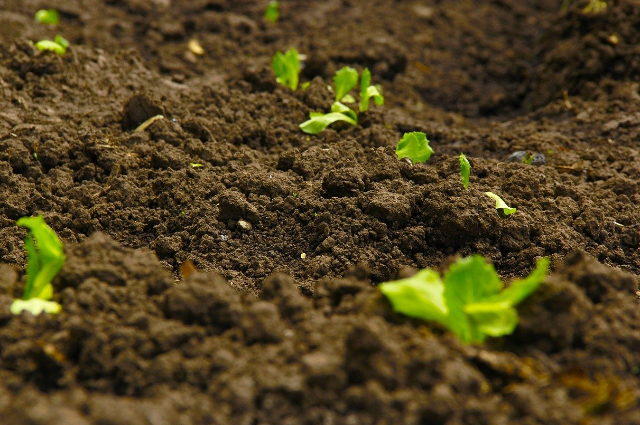
Soil is a very important natural resource. It is the uppermost layer of the earth's crust. Soil consists of pebbles, sand, clay and humus. Plants grow in soil. Their roots absorb water and minerals from it. Plants give us food and oxygen. Many worms and insects also live in the soil. Centipedes, earthworms and ants live in it. Snails and snakes also live under the ground.
(A) SOIL FORMATION:
Rocks get heated during the day and cool down at night. This heating and cooling breaks down the rocks into smaller pieces. Heavy rains break them down even further. The action of wind crushes these particles into small pieces. Thus, soil is formed.
(B) SOIL PROFILE:
Soil is formed in a number of layers. The top layer of the soil is top soil. It is dark coloured. Below it, lies a light-coloured layer, full of broken rock-pieces. This is called the sub soil. The bottom layer is made of solid rock is called the bedrock. This sequence of layers is called soil profile.
(C) CONSTITUENTS OF SOIL ELEMENTS:
Soil is a mixture of many elements. It has minerals of different colours, dead remains of plants and animals. Some amount of water, air and tiny microscopic organisms. It takes almost four hundred to a few thousand years to produce just 2.5 cm of the top layer of soil. The heaviest particles of soil, the small pebbles and other stones settle at the bottom. This is gravel, followed by sand and clay. Humus can be observed on the top containing dead remains of plants and animals. Humus makes the soil fertile.
(D) SOIL CONTAINS AIR:
Water the plant till the water reaches just a little below the rim of the pot. Bubbles being formed in the water. The bubbles are formed by air which is trapped between the particles of soil. When water enters these spaces, air tries to escape out. This gives rise to bubbles. Too much of water in the soil suffocates the plant.
(E) KINDS OF SOIL:
All soils do not have the same amount of water and air. Different soils have different amount of water and air. The three main kinds of soil are sandy, clayey and loamy soil. Humus add fertility to the soil.
- SAND: Sand particles are big, rough and usually cannot absorb water. For example -sea shores, deserts, river banks.
- CLAY: Clay is wet and sticky. It can hold water. It is also used by potters to make toys, pots and utensils. For example -Near river mouths and basin.
- LOAM: Loam is the most fertile soil. It is a mixture of humus, sand, clay and decayed vegetable matter. Many plants can grow in this soil because of humus in it composed matter.
